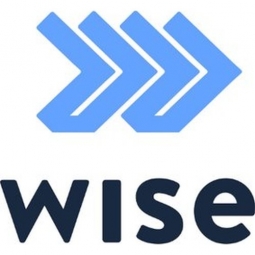公司规模
Large Corporate
地区
- America
国家
- United States
产品
- Wise Systems Platform
- Wise App
技术栈
- Machine Learning
- Real-Time Traffic Data
实施规模
- Enterprise-wide Deployment
影响指标
- Cost Savings
- Productivity Improvements
- Customer Satisfaction
技术
- 功能应用 - 车队管理系统 (FMS)
- 分析与建模 - 机器学习
适用行业
- 食品与饮料
- 运输
适用功能
- 物流运输
- 商业运营
用例
- 车队管理
- 预测性维护
服务
- 软件设计与工程服务
- 系统集成
关于客户
Anheuser-Busch is one of the largest beverage brands in the world, known for its extensive range of beers and other beverages. The company operates a vast network of distributors and retailers, requiring a highly efficient logistics and delivery system to maintain its market position. With a fleet of 850 trucks, Anheuser-Busch is responsible for ensuring timely deliveries to its regional distributors and retailers. The company has been in operation for many years and has a significant presence in the United States and other countries. Anheuser-Busch's commitment to quality and customer satisfaction drives its continuous efforts to optimize its operations and delivery network.
挑战
Anheuser-Busch sought to optimize its delivery network for speed without spending years and millions of dollars developing proprietary software. Faced with surging sales and a growing network of distributors to serve, Anheuser-Busch was pressed to find a way to deliver products faster. The company simply didn't have the time or capacity to spend years working on a solution the way that UPS and others have. Instead, it was looking for a plug-and-play solution that helped quickly alleviate the issues in its network of 850 trucks that are used to bring products to regional distributors.
解决方案
Anheuser-Busch piloted and eventually implemented Wise's app-based delivery routing platform to replace manual planning methods. Up until 2013, the beverage behemoth used a pen and paper to track and manage their outbound shipments to distributors and retailers, which was woefully inefficient. In 2015, the beverage company began trialing Wise's platform, which directs delivery drivers to their destinations based on calculations made by its machine learning algorithms. Wise's algorithms use historical data, real-time traffic patterns, parking limitations, and other inputs to give drivers the most efficient order for them to execute their daily deliveries all on the Wise app. In the Wise app, drivers can also be given specific instructions on each delivery. For instance, the app will specify if the loading dock of a distribution center is located on the rear of the building. Anheuser-Busch tested out the Wise platform on a limited basis for nearly two years before rolling it out to its entire network of drivers in early 2017.
运营影响
数量效益

Case Study missing?
Start adding your own!
Register with your work email and create a new case study profile for your business.
相关案例.

Case Study
The Kellogg Company
Kellogg keeps a close eye on its trade spend, analyzing large volumes of data and running complex simulations to predict which promotional activities will be the most effective. Kellogg needed to decrease the trade spend but its traditional relational database on premises could not keep up with the pace of demand.

Case Study
Airport SCADA Systems Improve Service Levels
Modern airports are one of the busiest environments on Earth and rely on process automation equipment to ensure service operators achieve their KPIs. Increasingly airport SCADA systems are being used to control all aspects of the operation and associated facilities. This is because unplanned system downtime can cost dearly, both in terms of reduced revenues and the associated loss of customer satisfaction due to inevitable travel inconvenience and disruption.

Case Study
HEINEKEN Uses the Cloud to Reach 10.5 Million Consumers
For 2012 campaign, the Bond promotion, it planned to launch the campaign at the same time everywhere on the planet. That created unprecedented challenges for HEINEKEN—nowhere more so than in its technology operation. The primary digital content for the campaign was a 100-megabyte movie that had to play flawlessly for millions of viewers worldwide. After all, Bond never fails. No one was going to tolerate a technology failure that might bruise his brand.Previously, HEINEKEN had supported digital media at its outsourced datacenter. But that datacenter lacked the computing resources HEINEKEN needed, and building them—especially to support peak traffic that would total millions of simultaneous hits—would have been both time-consuming and expensive. Nor would it have provided the geographic reach that HEINEKEN needed to minimize latency worldwide.

Case Study
IoT-based Fleet Intelligence Innovation
Speed to market is precious for DRVR, a rapidly growing start-up company. With a business model dependent on reliable mobile data, managers were spending their lives trying to negotiate data roaming deals with mobile network operators in different countries. And, even then, service quality was a constant concern.

Case Study
Digitize Railway with Deutsche Bahn
To reduce maintenance costs and delay-causing failures for Deutsche Bahn. They need manual measurements by a position measurement system based on custom-made MEMS sensor clusters, which allow autonomous and continuous monitoring with wireless data transmission and long battery. They were looking for data pre-processing solution in the sensor and machine learning algorithms in the cloud so as to detect critical wear.

Case Study
Cold Chain Transportation and Refrigerated Fleet Management System
1) Create a digital connected transportation solution to retrofit cold chain trailers with real-time tracking and controls. 2) Prevent multi-million dollar losses due to theft or spoilage. 3) Deliver a digital chain-of-custody solution for door to door load monitoring and security. 4) Provide a trusted multi-fleet solution in a single application with granular data and access controls.







